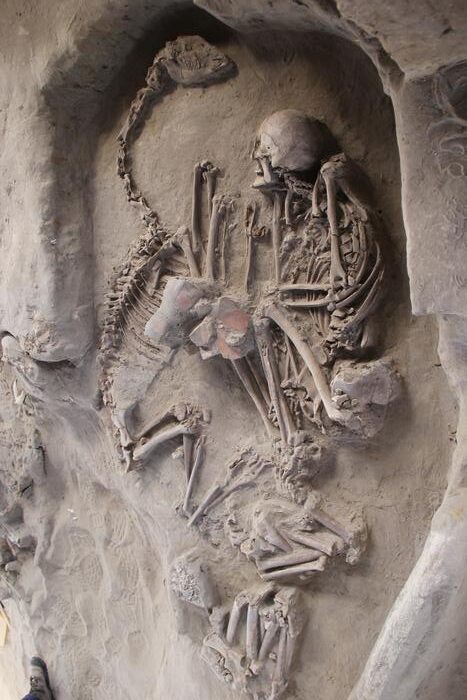Llamas have long been symbolic of Andean culture, widely recognized as animals domesticated by the Inca civilization to fulfill crucial roles in transportation, agriculture, and textiles. However, recent groundbreaking research is challenging this established timeline by suggesting that llama domestication may have occurred much earlier than previously believed, and specifically in the semi-arid northern regions of Chile. A multi-proxy analysis conducted on camelid remains from the El Olivar archaeological site, dated between 1,090 and 1,440 cal AD, provides compelling evidence that domesticated llamas were present in this region well before the Incas established their expansive empire.
The El Olivar site in northern Chile serves as a unique cemetery context where archeologists uncovered complete camelid skeletons interred alongside human remains, offering a rare window into ancient human-animal relationships. Unlike isolated bone finds, these funerary deposits allow researchers to study camelid usage and status within human societies in a more holistic manner. The research team employed an integrative multi-proxy approach combining osteological analysis, isotopic data, and morphometric measurements to discern the identity and domestication status of the camelids.
From an osteological perspective, the bone morphology was indicative of medium-sized camelids consistent with llamas (Lama glama) rather than wild guanacos (Lama guanicoe). This distinction is pivotal since the two species often co-occur in South American archaeological sites but differ significantly in their domestication status and cultural implications. The analysis revealed bone robusticity and skeletal shape aligning closely with domesticated llama profiles, supporting the hypothesis that these animals were not wild but managed by humans.
Moreover, stable isotope analysis provided insights into the diets and mobility patterns of these camelids. The isotopic signatures suggested a relatively controlled diet consistent with human provisioning, rather than the diverse grazing patterns expected from wild populations. This dietary uniformity reinforces the notion of domestication and human care. Additionally, strontium isotope mapping helped interpret the geographic origin of these animals, hinting at local rearing practices rather than large-scale trade or transient herding.
Importantly, this study refines regional archaeological chronologies by situating llama domestication in the semi-arid northern Chilean environment at least several centuries prior to the 15th century Inca expansion. The timing challenges the traditional view that llamas were introduced exclusively or primarily through Inca imperial networks and suggests a more complex process of domestication and animal management independent of Inca state control.
The cultural implications of these findings are profound. The presence of domesticated llamas in burial contexts with humans points towards the symbolic and economic value attributed to these animals by pre-Inca societies. Llamas likely played essential roles beyond mere labor or meat provision, possibly including ritual significance within mortuary customs. The careful placement of complete camelid remains alongside human skeletons indicates intricate social and spiritual relationships that warrant further anthropological scrutiny.
Technologically, the El Olivar project exemplifies the power of multi-proxy methodologies in archaeology. By integrating morphometrics, isotopic geochemistry, and contextual analysis, the researchers achieved a nuanced reconstruction of ancient animal domestication processes otherwise elusive through singular methods. This comprehensive approach opens new pathways for re-examining other ancient sites in South America and beyond.
The research team, comprising experts from Chile, Denmark, and Argentina, emphasized that the study was conducted without external influence over design, collection, or publication decisions, ensuring scientific rigor and transparency. Their work highlights international collaboration and shared scholarly interest in unraveling complex human-animal dynamics in prehistoric contexts.




